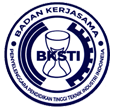Improving Process Capability of The Electronics Component Company Through SMED
Abstract
Keywords
Full Text:
PDFReferences
Asan, O., & Montague, E. (2014). Using video-based observation research methods in primary care health encounters to evaluate complex interactions. Informatics in Primary Care, 21(4), 161–170. https://doi.org/10.14236/jhi.v21i4.72
Cakmakci, M. (2009). Process improvement: performance analysis of the setup time reduction-SMED in the automobile industry. The International Journal of Advanced Manufacturing Technology, 41(March), 168–179. https://doi.org/10.1007/s00170-008-1434-4
Costa, E., Bragança, S., Sousa, R., & Alves, A. (2013). Benefits from a SMED application in a punching machine. World Academy of Science, Engineering and Technology, 7(5), 379–385. http://waset.org/Publications/benefits-from-a-smed-application-in-a-punching-machine/17166#!
Dave, Y., & Sohani, N. (2012). Single minute exchange of dies: A literature review. International Journal of Lean Thinking, 3(2), 27-37. https://www.semanticscholar.org/paper/Single-Minute-Exchange-of-Dies-%3A-Literature-Review-DAVE/0622a993ae25ac661d7279b69e1901af64a8be20#citing-papers
Dean, L. (2007). Comparison of common root cause analysis tools and methods. Apollo Root Cause Analysis: A New Way of Thinking. http://www.realitycharting.com/_public/site/files/pdf/ARCA_Appendix.pdf
Demeter, K., & Matyusz, Z. (2011). The impact of lean practices on inventory turnover. International Journal of Production Economics, 133(1), 154–163. https://doi.org/10.1016/j.ijpe.2009.10.031
Holaday, D. (1977). Hockings: Principles of Visual Anthropology. Studies in Visual Communication, 4(1), 59-62. https://repository.upenn.edu/cgi/viewcontent.cgi?article=1047&context=svc
Joshi, R., & Naik, G. R. (2012). Application of SMED Methodology-A Case Study in Small Scale Industry. International Journal of Scientific and Research Publications, 2(8), 2250–3153. http://www.ijsrp.org/research-paper-0812/ijsrp-p0870.pdf
Karam, A. A., Liviu, M., Cristina, V., & Radu, H. (2018). The contribution of lean manufacturing tools to change-over time decrease in the pharmaceutical industry. A SMED project. Procedia Manufacturing, 22, 886–892. https://doi.org/10.1016/j.promfg.2018.03.125
McIntosh, R. I., Culley, S. J., Mileham, A. R., & Owen, G. W. (2000). A critical evaluation of Shingo's 'SMED' (Single Minute Exchange of Die) methodology. International Journal of Production Research, 38(11), 2377–2395. https://doi.org/10.1080/00207540050031823
Michels, B. (2007). Application of Shingo's Single Minute Exchange of Dies [Wisconsin-Stout]. http://www2.uwstout.edu/content/lib/thesis/2007/2007michelsb.pdf
Moreira, A. C., & Pais, G. C. S. (2011). Single minute exchange of die. A case study implementation. Journal of Technology Management and Innovation, 6(1), 129–146. https://doi.org/10.4067/S0718-27242011000100011
Ribeiro, D., Braga, F., Sousa, R., & Carmo-Silva, S. (2011). An application of the smed methodology in an electric power controls company. Romanian Review Precision Mechanics, Optics and Mechatronics, 40, 115–122. https://repositorium.sdum.uminho.pt/handle/1822/15892
Roth, N., & Franchetti, M. (2010). Process improvement for printing operations through the DMAIC Lean Six Sigma approach. International Journal of Lean Six Sigma, 1(2).119-133. https://doi.org/10.1108/20401461011049502
Shingo, S. (1985). A Revolution in Manufacturing : The SMED System. The Japan Management Association.
Sundar, R., Balaji, A. N., & Satheesh Kumar, R. M. (2014). A review on lean manufacturing implementation techniques. Procedia Engineering, 97, 1875–1885. https://doi.org/10.1016/j.proeng.2014.12.341
Teran-Somohano, A., & Smith, A. E. (2013). A setup reduction methodology from lean manufacturing for development of meta-heuristic algorithms. 2013 IEEE Congress on Evolutionary Computation, CEC 2013, 3132–3139. https://doi.org/10.1109/CEC.2013.6557952
Ulutas, B. (2011). An application of SMED methodology. World Academy of Science, Engineering and Technology, 79(July 2011), 100–103. https://publications.waset.org/14919/an-application-of-smed-methodology
DOI: http://dx.doi.org/10.22441/ijiem.v1i3.10236
Refbacks
- There are currently no refbacks.

This work is licensed under a Creative Commons Attribution-NonCommercial 4.0 International License.
IJIEM - Indonesian Journal of Industrial Engineering & Management
Program Pascasarjana Magister Teknik Industri Universitas Mercu Buana
Kampus Menteng - Gedung Tedja Buana, Floor 4th
Jl. Menteng Raya No. 29 Jakarta Pusat- Indonesia
Tlp.: +62 21 31935454 Fax: +62 21 31934474
http://publikasi.mercubuana.ac.id/index.php/ijiem
Email: [email protected]

This work is licensed under a Creative Commons Attribution-NonCommercial 4.0 International License.
The journal is indexed by:





1.png)
.png)
.png)
.png)







